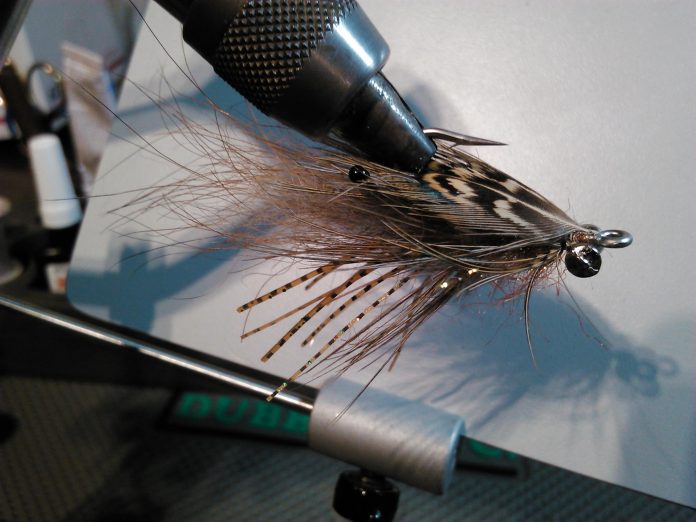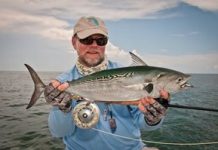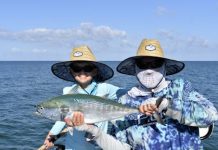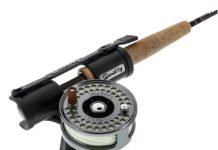 Snook action is hot around lighted docks and bridges. At night, the forage that is most readily responsible for the “pop” made by Snook as they slam the surface is a small shrimp. A fly fishing friend, Brad Lowman, was night fishing along the sea wall at one of our passes during a strong outgoing tide and could see small shrimp being devoured by large Snook.
Snook action is hot around lighted docks and bridges. At night, the forage that is most readily responsible for the “pop” made by Snook as they slam the surface is a small shrimp. A fly fishing friend, Brad Lowman, was night fishing along the sea wall at one of our passes during a strong outgoing tide and could see small shrimp being devoured by large Snook.
Using a shrimp pattern, Brad was able to connect with some Snook by having his fly duplicate the free floating natural baits. Cast your fly across or up tide and mend your line to avoid “drag.” Mending can be accomplished by making an aerial mend with a reach cast. Do this by making your conventional cast, and as the line straightens, slip line with the line hand as you move the rod up current before the fly hits the water.
Conventional mending, using the rod tip in a slow roll, as used in stream fishing for trout or smallmouth bass, also works. A simple alternative is to shake your rod tip and release line with your line hand after the cast, as your offering drifts in the current. Some strikes are very subtle, others will be explosive. Pulling your shrimp fly against the current will get constant refusals.
Always spend a few minutes observing the water and conditions before your first cast. Keen observations will tell you what pattern to use, size they are taking, location of most fish, and if their take is deep or shallow.
A nine weight rod, with a weight forward line should work. Spend the extra money for fluorocarbon leader material. I usually use a thirty pound tippet, which you should check carefully for damage after each fish. If there is any structure around, Snook will head for cover. When this happens, if you can’t turn the fish with rod pressure, ease up on the tension and the fish will occasionally swim out to deeper water.
Shrimp patterns can be simple or complex. I’m including a simple pattern that works.
Additional Information for Simple Fly Pattern
This fly pattern is very versatile because the size of the fly can be modified by increasing the length of the hook shank. Using a longer hook, such as a Mustad 34007 or Tiemko 9394 will increase the length of the body and result in a longer overall size. Walking along the beach this morning I saw newly hatched threadfins that were an inch and a half to two inches in length. The Snook were keying in on this size forage. As the season progresses, a longer profile will be more effective.
Captain Rick Grasset of Sarasota uses a shorter version as his Grass Minnow; Florida outdoor writer Norm Zeigler’s Schminnow has a longer body length, and usually uses Maribou material for the tail. The name implies a shrimp/minnow resemblance. White is the color that is most popular. I have used this pattern years ago on the Susquehanna River in Pennsylvania for smallmouth bass in chartreuse, white and black. The black version, when tied with a longer tail represents a hellgrammite or clipper which is deadly bass bait.
I couldn’t think of a simpler pattern which is so effective. A few minutes with a little instruction will have you turning out beautiful flies. Grab a handful and go fishing.
Capt. Pat Damico
Email: flyguy@captpat.com
Web Site: http://captpat.com/
- Captain’s Corner:Pat Damico - June 25, 2019
- Flat water makes seeing tarpon easier - May 17, 2017
- Warm rivers holding plenty of targets for fly fishermen - February 16, 2017











